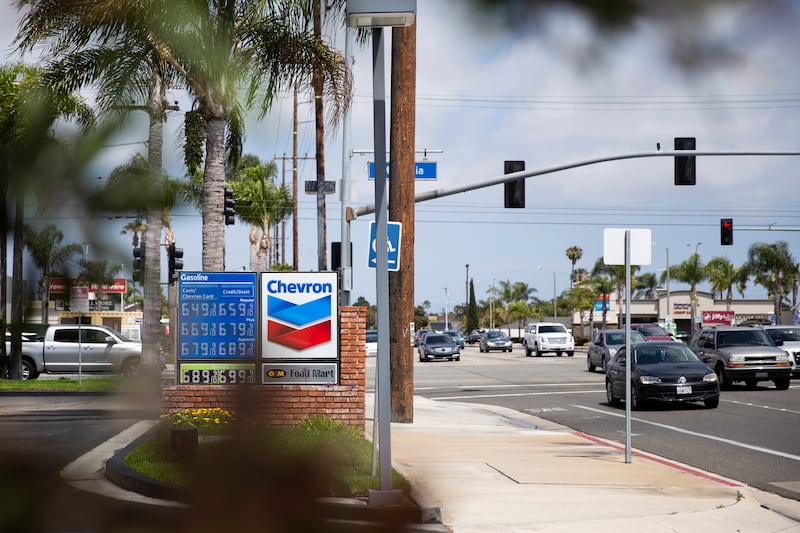Exxon Mobil and Chevron, the two largest US oil companies, this month committed to spending more than $50 billion each to buy smaller companies in deals that would let them produce more oil and natural gas for decades to come.
But a day after Chevron announced its acquisition, the International Energy Agency released an exhaustive report concluding that demand for oil, gas and other fossil fuels would peak by 2030 as sales of electric cars and use of renewable energy surged.
The disconnect between what oil companies and many energy experts think will happen in the coming years has never been quite this stark.
Big oil companies are doubling down on drilling for oil and gas and processing it into fuels for use in engines, power plants and industrial machinery. And, with only a few exceptions, they are not spending much on alternatives such as wind and solar power and electric-car batteries.
“They are putting their money where their mouths are,” said Larry Goldstein, director of special projects at the Energy Policy Research Foundation, a Washington non-profit that specialises in oil, natural gas and petroleum products.
Officials at the IEA, which the United States and its allies created during an oil crisis in the 1970s, think the oil companies are making a bad bet. They point to the stunningly fast growth in renewable energy and sales of electric cars, mopeds and other vehicles – 1 out of every 5 new vehicles sold this year will be battery-powered, up from 1 out of every 25 in 2020.
“The transition to clean energy is happening worldwide and is unstoppable,” said Fatih Birol, the agency’s executive director.
The kinds of energy that people and businesses use – and how they use it – over the next couple of decades will have huge environmental and economic consequences. Most climate scholars say eliminating greenhouse gas emissions, which are primarily caused by burning fossil fuels, by 2050 is essential to preventing the worst effects of climate change.
Oil executives dismiss the IEA’s projections, saying the world will need their products for a long time to come.
“I personally disagree, the majors disagree, Opec disagrees, everybody that produces oil and gas disagrees,” said Scott Sheffield, CEO of Pioneer Natural Resources, which Exxon agreed to buy for $60 billion two weeks ago. The IEA, Sheffield added, misunderstands “the demand for our products.”
He went on: “Who is going to replace jet fuel? Who is going to replace petrochemicals? What alternatives will replace all that?”
Buying Pioneer will expand Exxon’s already very big presence in the Permian Basin, a large oil and gas rich area that straddles Texas and New Mexico. The deal more than doubles Exxon’s properties in the basin.
And Chevron’s proposed acquisition of Hess is a giant bet on production in deep waters off the coast of Guyana, the fastest-growing oil prospect in the western Hemisphere. The deal would make Chevron a junior partner of Exxon, the principal operator in the field.

Both deals give the companies investments in fields where production costs are low and in areas that are largely stable, when future oil supplies from places such as Russia and Venezuela are more in doubt.
Oil executives are not oblivious to growing concerns about climate change. They say the consolidation will help them invest more in the relatively untested technology of capturing carbon dioxide, the leading greenhouse gas, and burying it deep underground for perpetuity. They also say they intend to invest substantial sums in hydrogen, a potentially cleaner fuel.
“Consolidation at this point is about giving the companies the scale to be more resilient to meet various priorities at the same time,” said Daniel Yergin, the oil historian who wrote about earlier waves of mergers in the oil industry in his book “The Prize.”
The IEA agrees that some demand for oil will persist for a while, but at much lower levels. That will drive down prices, making it harder for many companies to compete with large producers, such as Saudi Arabia, that can produce oil at a very low cost.
Oil executives agree that producing oil and gas at lower costs will be essential, and they argue that deals, such as Exxon’s purchase of Pioneer and Chevron’s acquisition of Hess, will help companies become more efficient. Sheffield of Pioneer said large European oil companies, such as Shell and BP, would soon have to get bigger, too.
“There are too many public companies,” Sheffield said. “It’s better for independents to consolidate into bigger companies. Energy security comes with larger companies.”
But one thing Sheffield and other executives are not interested in is straying too far from what they know best. With the exception of some European oil companies, such as BP, Equinor and ENI, most businesses in the industry are not investing much in things like electric-vehicle charging, nuclear power, wind farms or batteries.
Environmentalists like Mark Brownstein, a senior vice-president at the Environmental Defense Fund, said big oil companies were missing an important opportunity to reinvent themselves.
“I look at this wave of mergers and acquisitions more as players in the industry trying to squeeze the last light out of the existing business model than as part of a transition to the future,” Brownstein said. “This is more about acquiring assets to continue to provide cash flow.” – This article originally appeared in The New York Times.
2023 The New York Times Company














